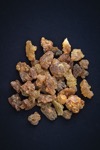Notice (8): Undefined index: geoplugin_countryCode [APP/Controller/AppController.php, line 94]Code Context$Country_code = '';if($ip_data && $ip_data['geoplugin_countryCode'] != null) {$Country_code = $ip_data['geoplugin_countryCode'];$client = null $forward = null $remote = '216.73.216.24' $ip = '216.73.216.24' $ch = unknown $ip_data_in = '{ "geoplugin_status":429, "geoplugin_message": "Blacklisted due to sending too many requests to geoplugin.net. Consider whitelisting your IP or domain", "geoplugin_url": "https://www.geoplugin.com/premium/" } ' $ip_data = [ 'geoplugin_status' => '429', 'geoplugin_message' => 'Blacklisted due to sending too many requests to geoplugin.net. Consider whitelisting your IP or domain', 'geoplugin_url' => 'https://www.geoplugin.com/premium/' ] $Country_code = ''App\Controller\AppController::initialize() - APP/Controller/AppController.php, line 94 App\Controller\ProductsController::initialize() - APP/Controller/ProductsController.php, line 31 Cake\Controller\Controller::__construct() - CORE/src/Controller/Controller.php, line 273 ReflectionClass::newInstance() - [internal], line ?? Cake\Http\ControllerFactory::create() - CORE/src/Http/ControllerFactory.php, line 47 Cake\Http\ActionDispatcher::dispatch() - CORE/src/Http/ActionDispatcher.php, line 91 Cake\Http\BaseApplication::__invoke() - CORE/src/Http/BaseApplication.php, line 235 Cake\Http\Runner::__invoke() - CORE/src/Http/Runner.php, line 65 Cake\Http\Runner::__invoke() - CORE/src/Http/Runner.php, line 65 Cake\Http\Middleware\CsrfProtectionMiddleware::__invoke() - CORE/src/Http/Middleware/CsrfProtectionMiddleware.php, line 108 Cake\Http\Runner::__invoke() - CORE/src/Http/Runner.php, line 65 Cake\Http\Runner::run() - CORE/src/Http/Runner.php, line 51 Cake\Routing\Middleware\RoutingMiddleware::__invoke() - CORE/src/Routing/Middleware/RoutingMiddleware.php, line 168 Cake\Http\Runner::__invoke() - CORE/src/Http/Runner.php, line 65 Cake\Routing\Middleware\AssetMiddleware::__invoke() - CORE/src/Routing/Middleware/AssetMiddleware.php, line 88 Cake\Http\Runner::__invoke() - CORE/src/Http/Runner.php, line 65 Cake\Error\Middleware\ErrorHandlerMiddleware::__invoke() - CORE/src/Error/Middleware/ErrorHandlerMiddleware.php, line 96
| Scientific: | Commiphora myrrh |
|---|---|
| Other: | Myrrh |
| Family: | Burseraceae |
| Synonym: | Commiphora molmol |
Myrrh is a gum-resin extracted from a shrubby tree belonging to the genus Commiphora myrrh (syn. Commiphora molmol). Historically this valuable plant extract was traded as perfume, incense, and as a medical remedy. The tree grows exclusively in North Africa where its origins date back to the ancient Egyptians who embalmed the bodies of Pharaohs with the antiseptic herb and also documented its first medical uses. The Indian Ayurvedic system of medicine uses a different species of myrrh (Commiphora mukul) for similar indications.
For thousands of years, doctors used myrrh to treat infections. Research studies confirm the resin has antibiotic activity against many bacteria. Also, it stimulates the production of white blood cells that fight infections. Gargling myrrh tincture improves bacterial pharyngitis and tonsillitis. The classic “HEMP” formula combines Hydrastis, Echinacea, Myrrha, and Phytolacca to treat streptococcal throat infections. As a mouthwash, it helps gingivitis and aphtous ulcers. Myrrh possess antifungal activity as well. In German herbalisms, it treats oral candidiasis (thrush) that commonly affects infants. Egyptian researchers found myrrh kills protozoan parasites like giardia and trichomonas offering a possible alternative to conventional antiparasitic drugs. Its astringent, anti-inflammatory and analgesic effects help patients suffering from stomach ulcers. Preliminary studies show promise for ulcerative colitis.
-
As a salve, myrrh treats wounds, hemorrhoids, and leg ulcers. Its vulnerary action aids the healing of ulcers and prevents and treats infections.
Antimicrobial and local mucous membrane stimulant.
Immune
• infections
• bacterial
• viral
• helminth (worm)
Oral-esophageal
• infections of the oral mucosa and throat
- gingivitis
- halitosis
- apthous stomatitis
Gastrointestinal
• gastric ulcers
Respiratory
• upper respiratory tract infections, with copious mucous
- strep throat
- colds
- influenza
- bronchitis
- pneumonia
Dermatologic (internal and topical use)
• gangrenous ulcer
• acne
• abscess
• Antimicrobial
• Antibacterial
• Antiviral
• Antifungal
• Antiparasitic
• anthelmintic
• Antischistosomal
• Expectorant
• Astringent
• Gastroprotective
• Antiinflammatory
• Antitussive
• Oleoresins
• Essential Oils
• Sesquiterpenes
• Diterpenes
• Gum
• Tincture (1:5 in 80% EtOH): 0.5-1 ml tid
Contraindications: Pregnancy; possible emmenogogue effects.
Barnes J, Anderson LA, Phillipson JD. Herbal Medicines, 3rd ed. London: Pharmaceutical Press, 2007.
Bone K. Principles and Practice of Phytotherapy. Edinburgh: Churchill Livingstone, 2000.
Bone K. A Clinical Guide to Blending Liquid Herbs: Herbal Formulations for the Individual Patient. St Louis, MO: Churchill Livingstone, 2003.
Brinker F. The Toxicology of Botanical Medicines, 3rd ed. Sandy, Oregon: Eclectic Medical Publications, 2000.
Felter HW, Lloyd JU. King's American Dispensatory. 1898. http://www.ibiblio.org/herbmed/eclectic/kings/main.html. Accessed: August 19, 2006.
Hoffman D. Medical Herbalism. Rochester, Vermont: Healing Arts Press, 2003.
Weiss RF. Herbal Medicine. Beaconsfield, England: Beaconsfield Publishers Ltd, 1988.
Williamson EM, ed. Major Herbs of Ayurveda. Edinburgh: Churchill Livingstone, 2002
Disclaimer: This content is subject to change. The information is intended to inform and educate; it does not replace the medical evaluation, advice, diagnosis or treatment by a healthcare professional. www.nhpassist.com © 2014 NDAssist Inc. and/or its affiliates. All rights reserved.

|
Myrrh
SummaryMyrrh is a gum-resin extracted from a shrubby tree belonging to the genus Commiphora myrrh (syn. Commiphora molmol). Historically this valuable plant extract was traded as perfume, incense, and as a medical remedy. The tree grows exclusively in North Africa where its origins date back to the ancient Egyptians who embalmed the bodies of Pharaohs with the antiseptic herb and also documented its first medical uses. The Indian Ayurvedic system of medicine uses a different species of myrrh (Commiphora mukul) for similar indications. IndicationsSign in requiredActionsSign in requiredConstituentsSign in requiredPosologySign in requiredSafetySign in requiredReferencesSign in required |
|---|